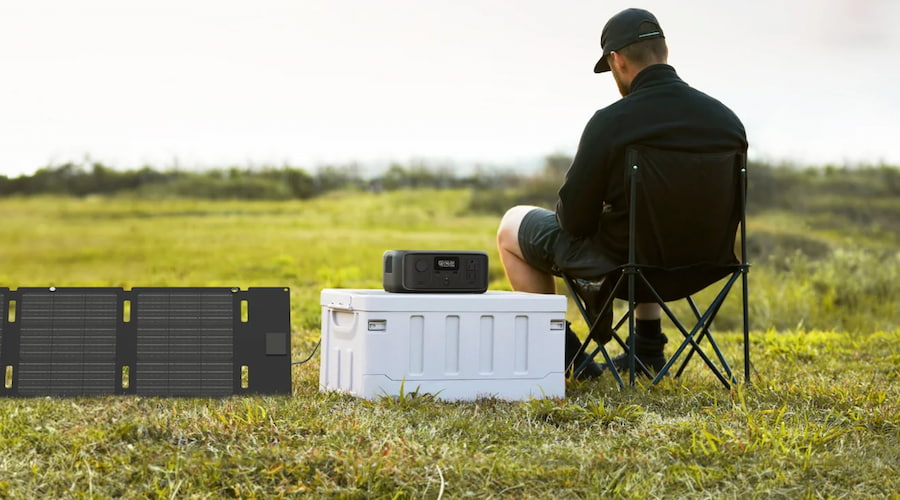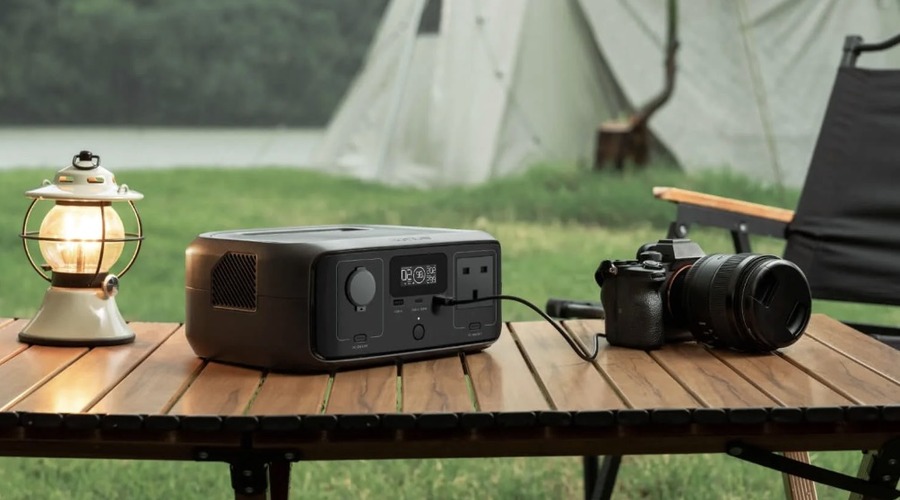CPAP Battery Camping Tips: How to Power Your Machine Outdoors
If you use a CPAP machine, heading off for a weekend in the bush—or even just a night under the stars—can feel a bit tricky. But the good news is, you don’t have to choose between fresh air and a good night’s sleep.
These days, there are plenty of ways to keep your CPAP running while you’re off-grid, whether you’re camping in a tent or a camper trailer. From using a CPAP battery camping model to tapping into your car or solar power, we’ll walk you through the best options to stay comfortable and well-rested, no matter where your adventure takes you.
How Can I Power My CPAP While Camping?
Depending on where you’re camping and how long you’re staying, there are several practical ways to keep your CPAP machine running:
Use a Portable CPAP Battery
A portable CPAP battery for camping is one of the easiest ways to keep your machine running in the outdoors. These batteries are lightweight, compact, and purpose-built to power CPAP devices, meaning they offer consistent output and are generally safe to use with sensitive medical equipment.
CPAP battery packs for camping come in various capacities, typically ranging from 90Wh to 400Wh. The actual run time depends on your CPAP machine’s power consumption, pressure settings, and whether features like the humidifier or heated tubing are used.
On average, a 160Wh battery can typically power a CPAP machine for 1 to 2 nights without the humidifier and heated tubing. Using the humidifier or heated tubing can significantly reduce the run time, often by half. Plus, most CPAP machines require a DC-to-DC converter to connect to a portable battery.
Use Your Car Battery
If you’re camping near your vehicle, you can power your CPAP machine directly from your car’s 12V battery. To use your car battery safely, you’ll need:
A 12V DC power adapter that’s compatible with your CPAP model.
A car cigarette lighter-style plug or a direct connection to the 12V outlet (if your car has one).
Optional: a voltage regulator or converter, depending on your CPAP brand (for example, ResMed machines often require a DC-DC converter to safely step down voltage).
A typical car battery (around 600Wh–800Wh usable) might power your CPAP for 1 to 2 nights with a humidifier or heated tube. But using your car battery comes with some risk—if you drain it too far, you might not be able to start your engine in the morning.
Bring a Portable Power Station
A portable power station is one of the most versatile and reliable ways to run a CPAP machine while camping. These compact, all-in-one units house a large lithium battery along with AC outlets, 12V DC ports, and USB charging—perfect for powering multiple devices at once. You can use them to run your CPAP, charge your phone, light up your campsite, or even power small appliances like fans, kettles, or a travel cooler.
Most portable power stations range from 200Wh to over 1,000Wh. As a general guide, you can expect an 500Wh unit to power a CPAP (without humidifier) for 1 or 2 nights, along with your other electronics.
You can plug your CPAP into the AC outlet, just like you would at home, but using a 12V DC output with a compatible CPAP DC cable is more efficient and will extend your battery life. Power stations can be recharged via AC mains power, a car cigarette lighter, or solar panels, which makes them perfect for off-grid or multi-day trips.
Use a Solar Generator
If you’re heading truly off-grid, a solar generator gives you an ongoing, eco-friendly power solution. They combine a solar panel with a portable power station, allowing you to recharge during the day and run your CPAP at night.
Here’s how it works:
The solar panel captures sunlight and converts it into electricity, which charges your portable power station. That stored energy is then used to power your CPAP machine overnight. It’s a quiet, clean, and renewable option—ideal for extended camping trips, remote areas, or national parks where power access is limited.
Some portable CPAP batteries support direct solar charging with compatible panels, giving you even more flexibility.


Stay at a Campsite with Electrical Hookups
If you’d rather not worry about managing power sources, booking a powered campsite is the simplest option. Most caravan parks and national park campgrounds across Australia offer powered sites where you can plug in your CPAP just like you would at home. Just remember to bring an extension lead and a power board if you’ve got other devices to charge.
Helpful Tips for Using a CPAP While Camping
As you see, camping with a CPAP machine is entirely feasible with the right preparation. Here are some practical tips to ensure a comfortable and uninterrupted sleep under the stars:
Choose a Travel-Friendly CPAP Machine
If possible, opt for a compact and lightweight CPAP device designed for travel. These models are easier to pack and often come with features tailored for off-grid use. Some even have integrated batteries for flexibility.
Turn Off the Humidifier and Heated Tubing
While the humidifier adds comfort, it also drains power quickly—sometimes cutting your battery life in half. If you’re camping off-grid or relying on limited power, it’s a good idea to turn off the humidifier and heated hose. Most machines allow you to switch to “AirSense only” or a similar low-power mode.
Choose the Right Power Setup
Plan your power source based on how long you’ll be camping, where you’re staying, and how much gear you’ll need to charge. For short trips, a fully charged portable CPAP battery pack may suffice. But if you’re heading off-grid for a few nights or want an all-in-one solution for your phones, lights, or mini fridges as well, it’s worth investing in a portable power station or solar generator setup.
A compact power station like the EcoFlow RIVER 3 (UPS) Portable Power Station is a great option for extended stays. Weighing just 3.5kg, it’s 30% smaller than the industry average, yet packs a 245Wh capacity and enough output (300W, with X-Boost up to 600W) to run your CPAP plus several other devices at once.
It can charge up to 5 appliances, and its whisper-quiet operation (<30dB) means it won’t disturb your sleep. Best of all, it fully recharges from the wall in just one hour—or via solar in 2.6 hours—so it’s ideal for off-grid setups with solar panels. With smart app control and a 10-year lifespan using LiFePO4 battery cells, the RIVER 3 offers reliable power in a small, durable package.


Bring the Right Cables and Converters
Many CPAP machines need a DC converter or specific cable to work with a portable battery or power station. Double-check what your model needs and pack any required accessories well ahead of time.
Keep Your Gear Dry and Dust-Free
Camping can be rough on sensitive equipment. Store your CPAP machine and battery in a protective, waterproof case or dry bag to guard against dust, moisture, and bugs. Elevate your gear off the ground when possible, especially if you’re in a tent or swag.
Check for Altitude Settings
Some CPAP machines allow you to adjust for higher altitudes, which may be helpful if you’re camping in mountainous areas. Check your machine’s manual or settings and make any necessary adjustments for optimal performance.
Test Your Setup Before Departure
Before heading out:
Assemble and run your CPAP system with the chosen power source to ensure compatibility.
Check for any issues with connections or battery performance.
Familiarize yourself with the setup process to streamline assembly at the campsite.
Conclusion
With the right setup, taking your CPAP machine camping is easier than you might think. A reliable CPAP battery camping, a portable power station, or even a solar generator can give you the freedom to explore the outdoors without giving up quality sleep. It all comes down to knowing your options and planning ahead. So, pack smart, check your gear before you go, and you’ll be all set for a safe, relaxing trip—CPAP and all.
FAQ
What is the best camping battery for a CPAP machine?
The best battery to use for CPAP camping depends on your setup, but look for one that’s portable, lightweight, and has enough capacity for your stays. On average, a 160Wh battery will usually get you one to two nights of therapy with humidifiers off. If you need more power—say for longer trips or to run other devices—a portable power station (like those from EcoFlow) is a great off-grid option.
How big of a battery do I need to run a CPAP?
The size of the battery you need to run a CPAP depends on your specific model and how you use it. Most users find that a battery with 150–160Wh capacity can power a CPAP for one to two nights, especially if you’re not using a heated humidifier. If you want to run your machine longer or keep other gear charged, consider a portable power station with 200–400Wh or more.
Can I use solar panels to power my CPAP battery during a camping trip?
Yes, many CPAP-compatible batteries and portable power stations support solar charging. You’ll just need to make sure your solar panel matches the input specs of your battery. Solar is a great option for multi-day camping trips, as it lets you recharge during the day and stay powered at night—completely off-grid.